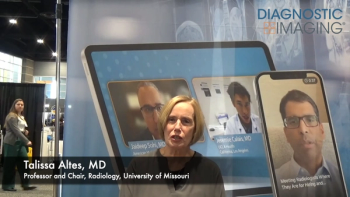
UCSF pioneers first CV lab combining x-ray and angiography
The imaging systems are ready to go in a pioneering cardiovascular lab at the University of California, San Francisco, designed as a test bed for new ideas and novel applications combining x-ray angiography and MRI. The interventional suite will explore
The imaging systems are ready to go in a pioneering cardiovascular lab at the University of California, San Francisco, designed as a test bed for new ideas and novel applications combining x-ray angiography and MRI. The interventional suite will explore the use of these two modalities in endovascular procedures involving cardiac, brain, and body applications.
Construction began last year with the hope the facility would be operating by late October (SCAN 8/30/01). While the official opening, now scheduled for this summer, is coming later than planned, the combination of modalities may be worth the wait.
The interventional suite is equipped with Philips’ Intera I/T MRI scanner and Integris cardiovascular x-ray imaging system. The systems, provided under a five-year agreement between Philips and UCSF, have been installed in adjoining rooms. But thanks to some fancy site specs, the two halves can serve as a single interventional MRI/cardiovascular x-ray suite.
One challenge was keeping the devices in close proximity. Providing adequate magnetic and radio-frequency shielding was complicated by the need to create easy patient access to both systems. Lindgren RF Enclosures devised a novel gateway linking the two: a dual-action sliding door.
“The door moves outward from the jam area, then slides to both sides,” said William E. Curran Jr., director of sales and marketing for Lindgren.
The threshold is flush, so there is no bump going from one end of the suite to the other. Patients will be transferred between the
x-ray imaging system and MRI scanner via a floating tabletop transport system.
Intera I/T is optimized to provide real-time interactive imaging capabilities. Images will be displayed in real-time on a ceiling-suspended LCD monitor.
“During endovascular procedures, physicians will be able to use angiography to locate the area of interest and monitor catheter movement, and then use MRI to perform the interventional phase,” said Charles Higgins, M.D., chief of MRI at UCSF.
Intera I/T will also help in making the initial diagnosis, evaluating flow effects resulting from x-ray-based endovascular treatment, and spotting any adverse effects arising from x-ray-guided thrombolytic therapy on blood flow in acute stroke patients.
“MR scanning during a procedure will show physicians the effects of their intervention in real-time, helping them determine whether additional work is required and allowing them, if necessary, to continue the procedure while the patient is still anesthetized,” Higgins said.
The UCSF site is the first of its kind, but others are in the offing. Lindgren RF Enclosures is studying plans for the National Institutes of Health, a hospital in Texas, and several international sites.
Newsletter
Stay at the forefront of radiology with the Diagnostic Imaging newsletter, delivering the latest news, clinical insights, and imaging advancements for today’s radiologists.




























